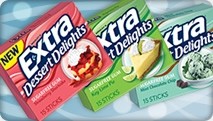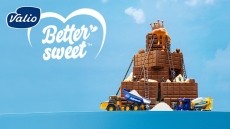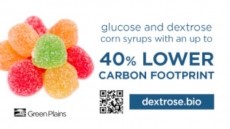Drop in demand for sugar-free sweets in US: report
The report, The Global Market for Intense Sweeteners, states that although the US has a large market for sugar confectionery, sugar-free sweets account for a very limited share of that market, but consumption of sugar-free chewing gum is growing.
The report notes that sugar-free varieties account for 82 per cent of the US chewing gum market by value, equivalent to sales worth almost $3.38bn in 2009.
The Leatherhead market analysts claim the drop in demand for sugar-free sweets in the US market has been due to consumer concern over the safety and artificial nature of many intense sweeteners.
Recent consumer research indicates that up to 45 per cent of US adults are seeking to reduce consumption levels of sweeteners such as aspartame, sucralose and saccharin, mainly as a result of those concerns.
Although all the sweeteners used in the US and the EU have been approved and are deemed safe by the food safety authorities, internet forums, newspaper reports and some scientific literature continue to garner suspicion.
After saccharin, aspartame is the second most used artificial sweetener in the world, with the sweetener being the subject of cancer claims and counter-claims.
But a study last year from Italian researchers, which included over 3,000 participants and which was published in the journal Cancer Epidemiology Biomarkers & Prevention, supported the safety profile of these sweeteners, including aspartame.
Sugar-free in Europe
The Leatherhead team note though that the sugar-free sweets market is well established in Spain and France, where they found that the sector accounts for over a third of overall volume sales of sugar confectionery in both instances.
“Within the Spanish market, the penetration of the sugar-free sector is highest for medicated sweets, although sugar-free toffees have also been appearing.
In France, meanwhile, sugar-free varieties account for up to 70 per cent of the pocket confectionery sector, which is largely made up of products geared towards children and teenagers,” report the analysts.
And sugar-free varieties account for more than a quarter of overall market value in Italy, they added, with penetration highest in the boiled sweets category.
“Much of this is due to the success of the Dietorelle brand, which also competes in sectors such as toffees and caramels, and features aspartame and acesulfame K as ingredients,” said the authors.
In contrast, the penetration of sugar-free sweets is much lower in the UK and Germany.
The sugar-free sector accounts for just 11 per cent of sales in the UK market by volume, compared with 10 per cent in Germany. “However, sugar-free products are more evident in sectors such as mints and medicated confectionery in both instances, driven by brand activity from the likes of Wrigley,” said the analysts.
Market predictions
According to the Leatherhead data, natural sweeteners may account for up to a quarter of the global intense sweeteners market by the middle of the next decade.
The analysts claim that stevia-derived sweeteners are driving the move away from additives and ingredients that are perceived as artificial, and it already accounts for 14 per cent of the intense sweeteners market, up from just one per cent in 2007.
“Stevia represents one of the most dynamic sectors within the global intense sweeteners market by far, with sales having risen dramatically since the middle of the last decade as a result of increasing uptake within the US food and drinks industry,” the report said.
An opinion released this month by the European Food Safety Agency (EFSA) concluded that steviol glycosides are not carcinogenic or genotoxic, a finding in line with other similar bodies across the world.
Leatherhead said that, as a result of this conclusion, the EU is widely expected to approve the use of stevia in food manufacture at some point, probably during the early stages of 2011.

















